How Does a Slewing Bearing Work?
Slewing bearings, often referred to as slewing rings or slew bearings, are integral components in machinery demanding precise rotation around a single axis. As a specialized type of turntables bearings, they are engineered for high performance in rigorous industrial applications, ranging from heavy construction equipment to advanced medical devices. These bearings are the cornerstone for a variety of machines, ensuring smooth operation and robust functionality. Follow this blog guide to learn about “how does a slewing bearing work” and applications of slewing bearings.
What Is a Slewing Bearing
A slewing bearing, also known as slew bearing or slewing ring bearing, is a type of bearing that permits rotation around a fixed axis while supporting significant loads. A slewing bearing, with its inner and outer rings, rolling elements, spacers, seals, and optional gears, boasts sophisticated engineering that adeptly handles axial, radial, and moment loads in unison.
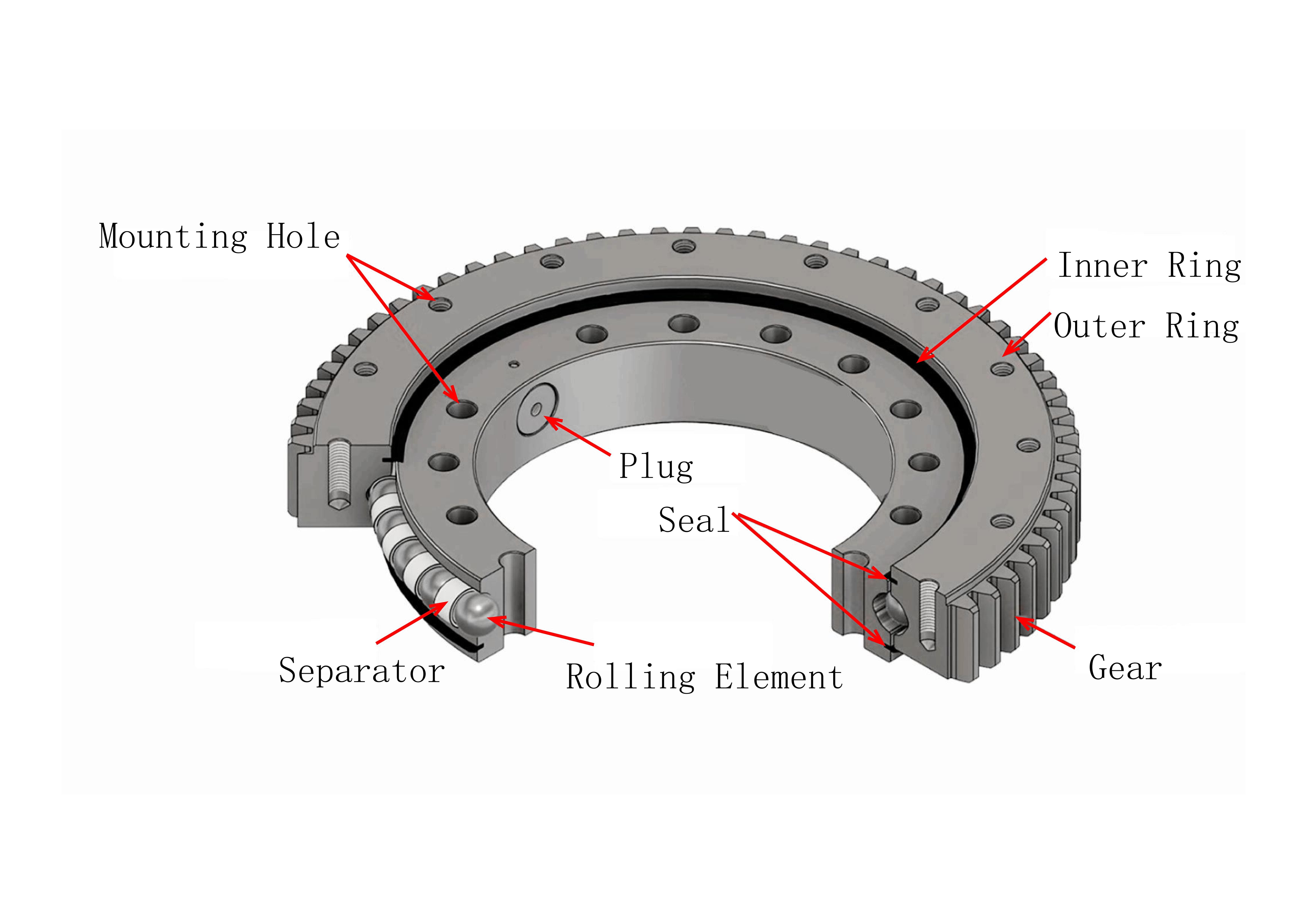
Fig 1 Structure of a Slewing Bearing
Structure of Slewing Bearings
The architecture of a slewing bearing, or a slewing gear bearing, is ingeniously crafted to support seamless rotation and sustain significant load capacity.
- Inner and Outer Rings: At the heart of the bearing's structure, the inner ring connects to the moving component, while the outer ring secures to a stationary framework, ensuring a flawless operational synergy.
- Rolling Elements (Balls or Rollers): Whether shaped as balls or rollers, these crucial components enable the inner ring to rotate smoothly against the outer ring, significantly reducing friction and wear for more efficient machinery performance.
- Spacers/Cages: Spacers or cages expertly guide and evenly space the rolling elements, like balls or rollers, preventing them from touching and ensuring they stay in place during assembly or maintenance, contributing to the bearing's longevity and reliability.
- Seals: Seals serve as protective barriers in bearings, preventing entry of contaminants like dust, dirt, or moisture. They retain lubricant within the bearing, reducing wear and tear, and extending the bearing's operational lifespan, all of which contribute to sustained efficient performance.
- Mounting Holes: Mounting holes are crucial for securing bearings to machinery. They ensure proper alignment, stable positioning, and efficient load distribution. This enhances the machine's performance, minimizes vibrations, extends the bearing's lifespan, and boosts overall functional efficiency and safety.
- Optional Gears: Integrated gears in slewing bearings enable powered rotation and precise control, facilitating movement. They mesh with external drive mechanisms to provide the necessary torque, enabling complex operations in machinery and equipment across various industries.
How Does a Slewing Bearing Work?
Rotational Movement
Slewing bearings, also known as a slew ring, turntable bearing, or slewing gear, stand as the cornerstone for enabling seamless rotational movement within heavy-duty machinery. These bearings are ingeniously designed, allowing the inner and outer rings to rotate in relation to one another. This rotation is facilitated by their connection to different parts of the machinery, providing a wide range of motion up to 360 degrees.
The core of their efficient functionality lies in the rolling elements—either balls or rollers—strategically placed between the races of the inner and outer rings. These elements play a crucial role in minimizing bearing friction, fostering a smooth and nearly effortless rotation that enhances the machinery's operational precision and agility.
Load Distribution
Designed with versatility in mind, slewing bearings excel in handling axial (thrust), radial, and moment (tilting) loads all at once. Their architecture ensures an effective distribution of these loads among the bearing's mechanical components.
Axial loads find support through the interaction between the rolling elements and the raceways, while radial loads spread out over the rolling elements' surface area. Moment loads, on the other hand, are evenly distributed thanks to the bearing's structural design and the strategic placement of rolling elements. This intricate load distribution mechanism not only stabilizes the machinery but also extends the service life of both the bearing and the equipment it operates within.
Gear Mechanism
For slewing bearings equipped with gears, including slewing gears, the integrated gear system introduces an added dimension of functionality—powered rotation. This feature is invaluable in scenarios requiring the bearing to be driven by an external motor or power source, enabling controlled and precise movements that are essential for the operation of various machinery.
Types of Slewing Bearings and Their Working Mechanisms
Slewing bearings come in various designs, each with its unique working mechanism.
Four Point Contact Ball Bearings
Four-point contact ball bearings feature a unique design where each ball contacts the raceway at four points. This allows the ball slewing bearing to simultaneously handle axial, radial, and moment (tilting) loads efficiently. The design optimally distributes loads, ensuring stability and minimizing stress points. This makes it perfect for applications requiring multi-directional loads support, enhancing its adaptability across diverse industrial uses.
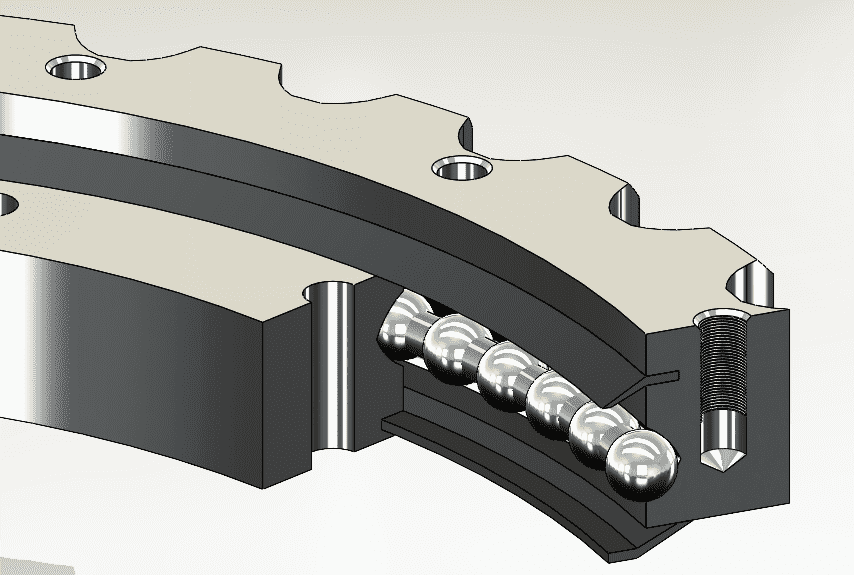
Fig 2 Four Point Contact Ball Bearing
Eight Point Contact Ball Slewing Ring Bearing
Eight-point contact ball slewing ring bearings feature a dual-row ball design that engages the raceway at eight distinct points, ensuring enhanced contact and stability. This design increases the bearing's ability to manage axial, radial, and moment loads by spreading them more uniformly over a greater number of contact points. The result is increased load resistance, better stability, and improved service life, particularly in applications with complex loading conditions.
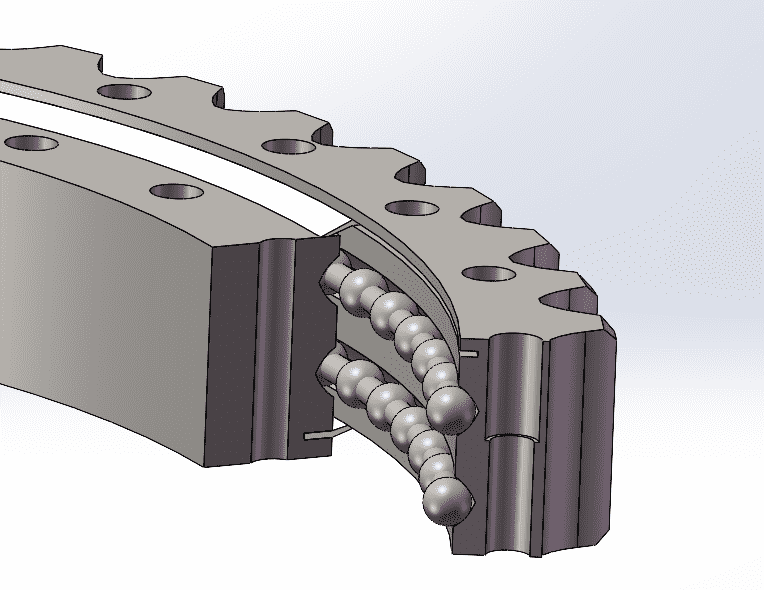
Fig 3 Eight Point Contact Ball Slewing Ring
Cross Roller Slewing Ring Bearing
Cross roller slewing ring bearings have rollers arranged crosswise, with alternate rollers at right angles to one another. This design achieves superior load distribution, with each roller capable of simultaneously supporting radial, axial, and moment loads from every direction. The cross-roller configuration offers exceptional rigidity and stability, ideal for applications demanding heavy load capacity and precise motion control.
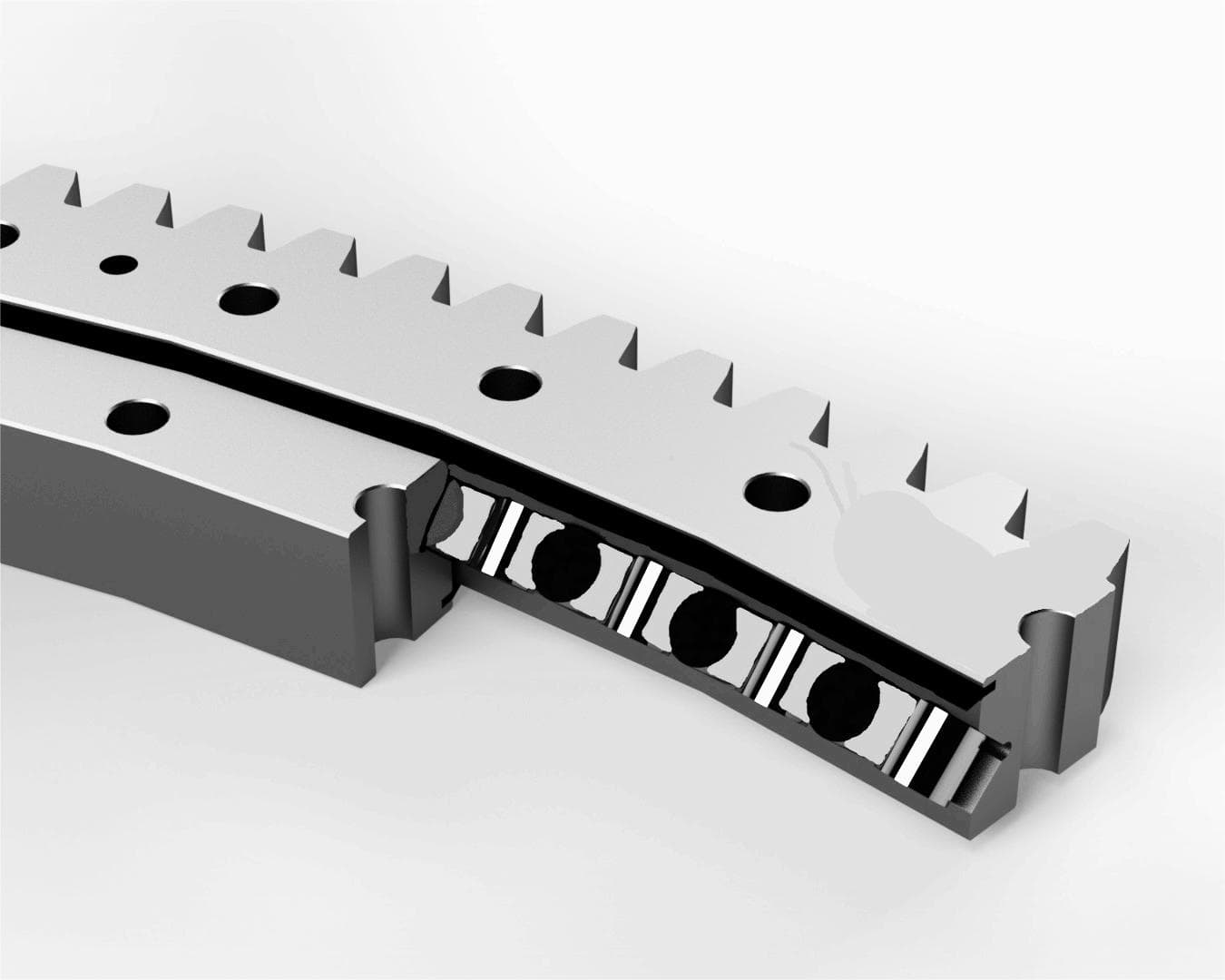
Fig 4 Cross Roller Slewing Ring
Three-Row Cross Roller Slewing Ring Bearing
Three-row cross roller slewing ring bearings boast separate raceways for each row of rollers, enhancing load distribution. This innovative design assigns each row the task of supporting distinct load types—axial, radial, and moment—separately, leading to a bearing that withstands considerably higher loads with enhanced stability and precision. It's perfectly suited for heavy-duty tasks requiring sophisticated load management.
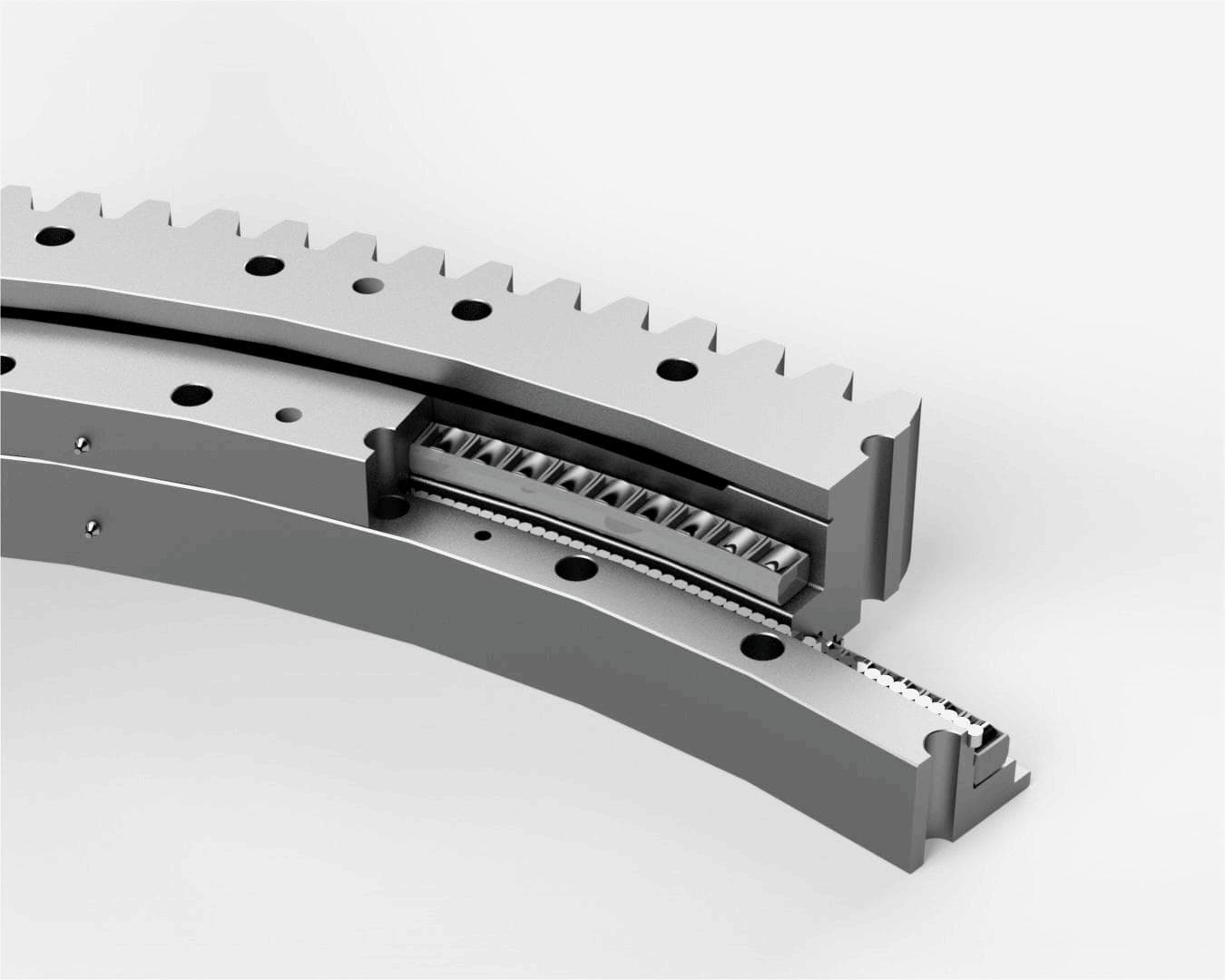
Fig 5 Three-Row Cross Roller Slewing Ring Bearing
Combined Bearings (Ball and Roller)
Combined bearings, integrating both ball and roller elements, offer a unique solution for balanced load distribution. Balls efficiently handle axial loads while rollers adeptly manage radial and moment loads. This combination ensures the bearing distributes different load types evenly across its structure, enhancing stability, reducing wear, and optimizing machinery performance in diverse working conditions.
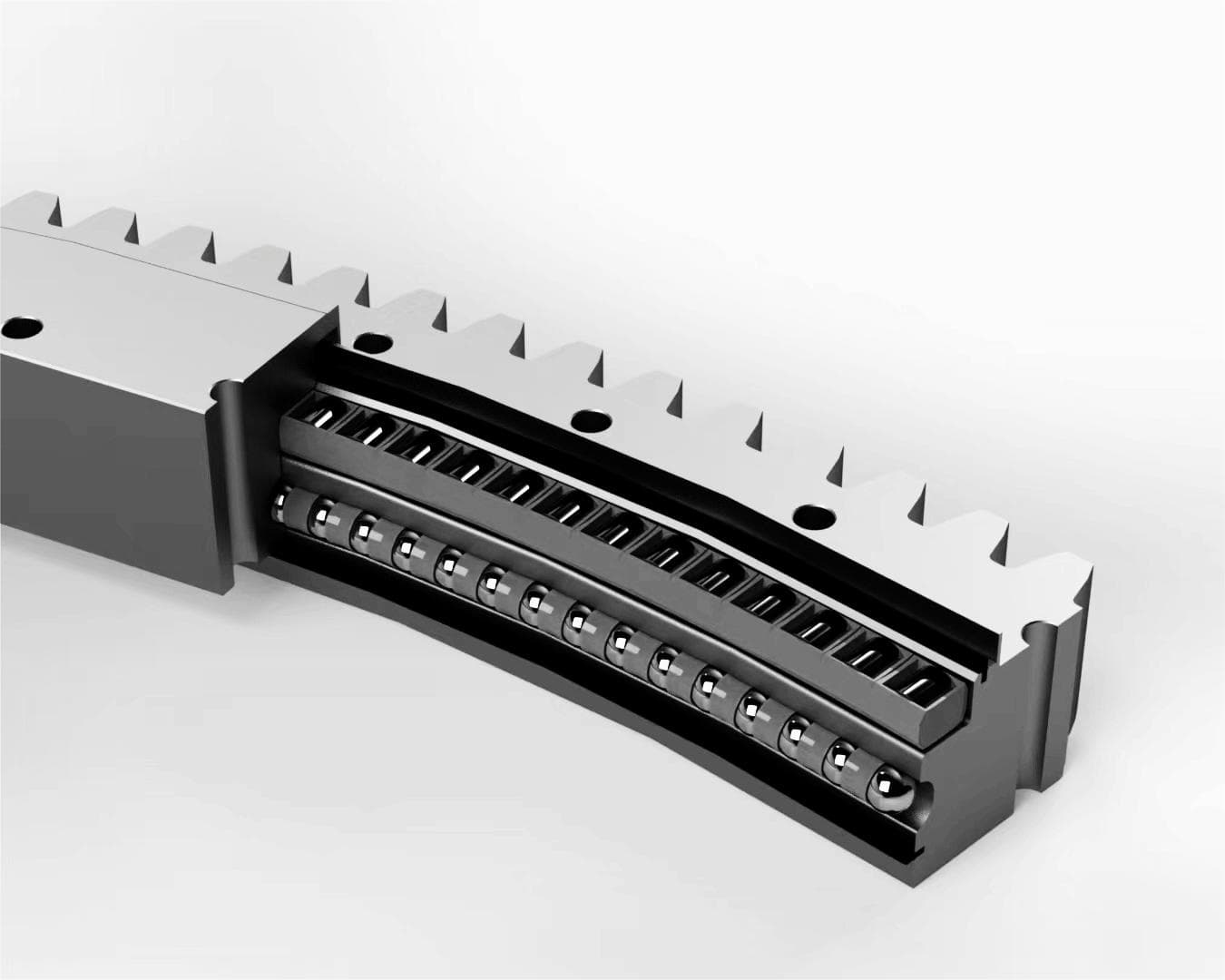
Fig 6 Combined Bearings (Ball and Roller)
Slewing Bearing Applications & Mechanics
Slewing bearings are widely used across various industries for their versatility in managing complex movements and heavy loads with ease.
- Cranes and Excavators: Crane and excavator slewing bearings allow for the 360-degree rotation of heavy machinery, enabling efficient operation in construction and mining.
- Wind Turbines: In the renewable energy industry, slewing bearings enable wind turbine blades and nacelles to rotate, maximizing their exposure to the wind for optimal efficiency.
- Medical Equipment: In medical imaging devices like CT scanners, slewing bearings ensure precise and smooth rotation for accurate diagnostics.
- Robotics and Industrial Machinery: These bearings play a crucial role in ensuring the precise and smooth operation of robotic arms and various automated machines.
Conclusion
The blog post “How Does a Slewing Bearing Work” guides you to understand the structure and working principles of different types of slewing bears. Slewing bearings are essential for precise, single-axis rotation in heavy machinery, supporting axial, radial, and moment loads. Their design, featuring inner/outer rings, rolling elements, and optional gears, ensures smooth operation and load distribution.
Widely used in cranes, wind turbines, medical devices, and robotics, they enhance stability, reduce wear, and improve efficiency. For all your slewing bearing needs, look no further than LILY Bearing, the prominent slewing bearing manufacturer.
Keep Learning








